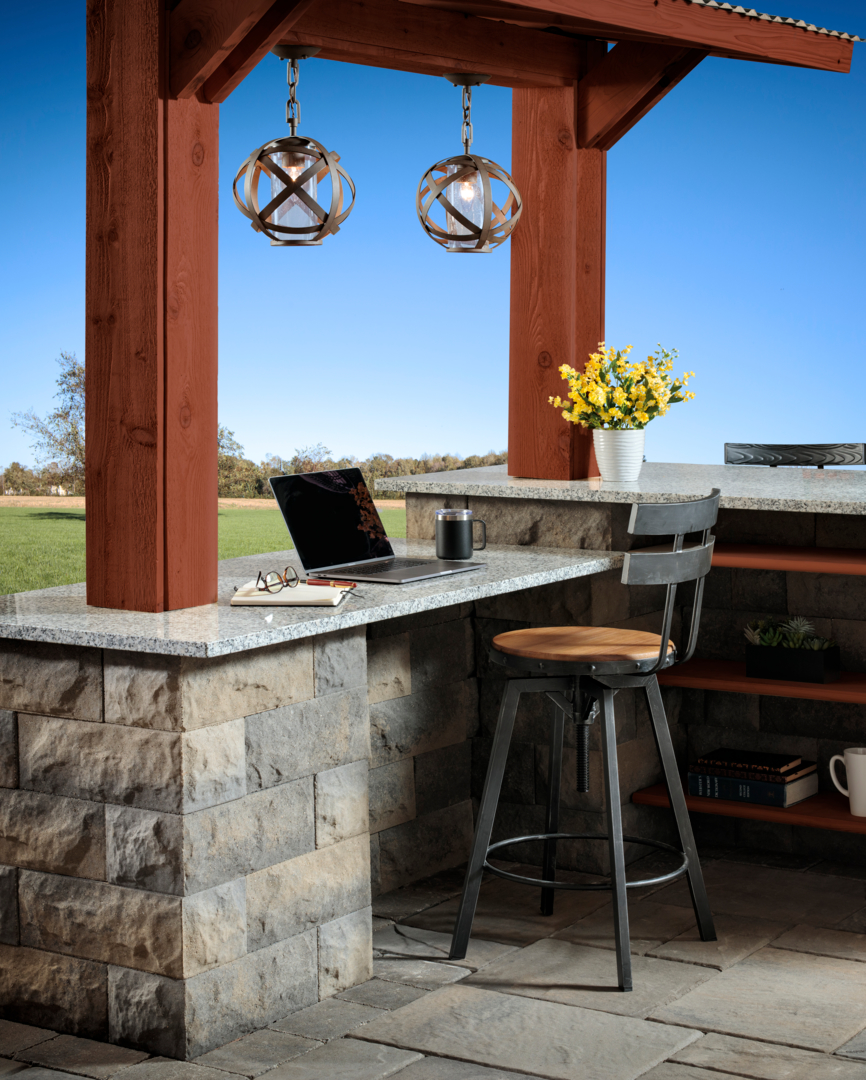2020 redefined the term “office,” with many people spending the better part of the year working from kitchen counters, dining tables, folding trays, and even more random spots around their houses. If your employer, like many, has decided that work-from-home is here to stay, consider annexing an office space you might not have thought of: the great outdoors.
In the right climate and season, working on your porch or patio can be a great change of scenery and a nature-inspired mood boost. Consider a few additions and accessories to ensure you’re both comfortable and productive when working outdoors:
1. Get a wifi extender. If you’re working outside, you’ll likely be farther from your home’s wifi router and might experience a low signal. A wifi extender (or booster) can help. Think of it as an extension cord for your wifi signal – position the extender somewhere between your router and your intended workspace, and the extender will help your signal reach further.
2. Create some shade. To protect your electronics—and your skin—you’ll need to create shade for your workspace. Shade sails are a great choice for a larger, more permanent swath of coverage, or a simple patio umbrella can be repositioned as needed as the sun moves throughout the workday. A cantilevered umbrella (where the pole is off to the side) will provide better coverage over a desk setup.
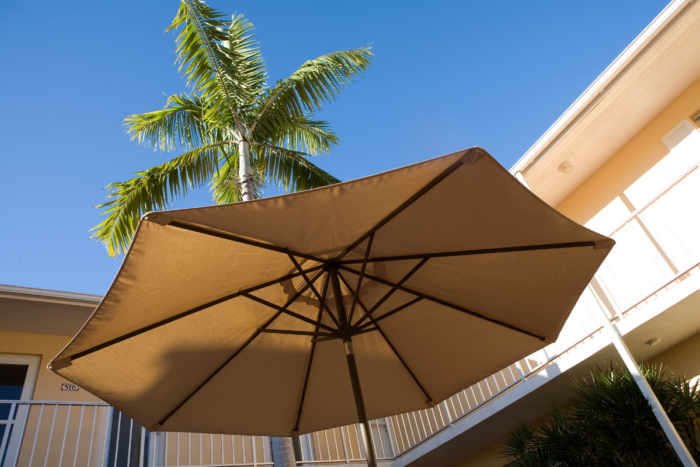
3. Reduce glare. Even with strategically placed shade, you might still experience more glare on your computer screen than you would inside. An anti-glare screen protector will help—with the bonus that most also filter damaging blue light to protect your eyes. Search for a model compatible with the size and brand of your laptop.

4. Remember ergonomics. The many mental benefits of working outdoors won’t offset physical discomfort, so take the time to ensure your workspace is set up with ergonomics in mind. A supportive, high-backed chair or a standing desk riser can help, or at least add a weather-resistant outdoor pillow to an existing chair for added support.

5. Add a rug. An outdoor rug will not only help visually define your office space, it will provide a smooth and lightly cushioned surface for sliding a chair or pacing around on a phone call.

6. Power it up. You’re outdoors, not camping—so feel free to run an extension cord to keep electronics charged and creature comforts powered. You’ll want an outdoor-rated cord, and a black or green option will be better camouflaged than the standard bright orange. An outdoor-rated powerstrip will give you plenty of outlets, and don’t forget a cord cover to protect against tripping over a cord that crosses a walkway or patio.

7. Make it comfortable. Keep your workspace at a comfortable temperature by adding a fan in warmer months and a heater when it starts to cool off. Using a usb-powered fan will free up an outlet, and your patio heater can be wheeled over (at a safe distance) to keep your workspace cozy even once cooler weather sets in.
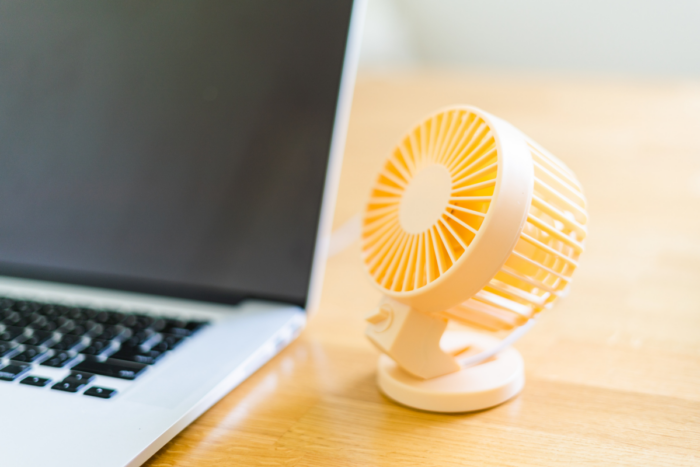
8. Create privacy. To shield yourself from natural distractions (and from distracting family members!), create a visual barrier to define your workspace. You can rearrange existing items on your patio like container gardens and planters, add a folding screen, or even start a vertical garden with a quick-growing climber like clematis or wisteria.
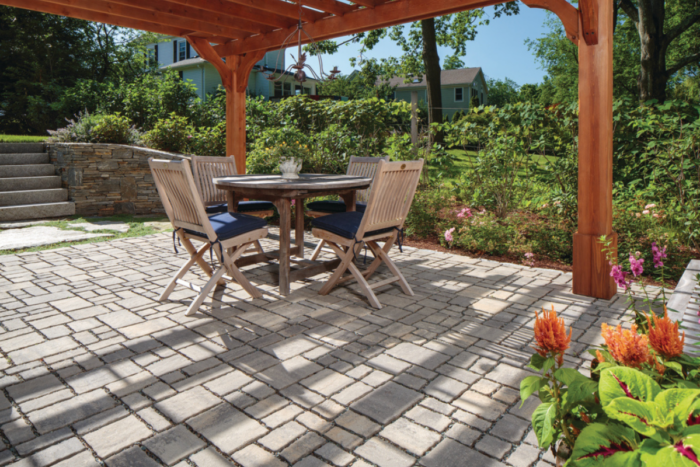
9. Keep it quiet. The peaceful sounds of nature—think chirping birds and rustling leaves—can sometimes compete with urban noises like lawnmowers, car engines, and loud music. Noise-canceling headphones can help block out the racket and keep you tuned into your own soothing soundtrack or video conference.
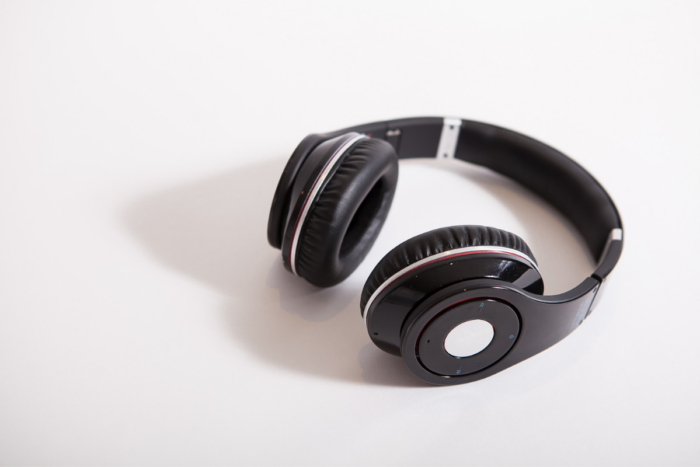
10. Make it permanent. If your work-from-home status is starting to look like a permanent gig, consider taking your outdoor office to the next level with a shed. If you’re not the DIY type, there are lots of premade options that can be delivered move-in ready. And if you ever do go back to your company headquarters full-time, you’ll be left with a cool bonus hangout space.

Working from home already has benefits like not commuting, and the ability to keep a flexible schedule—enjoying the outdoors while completing your work tasks is just one more perk to the WFH life.

